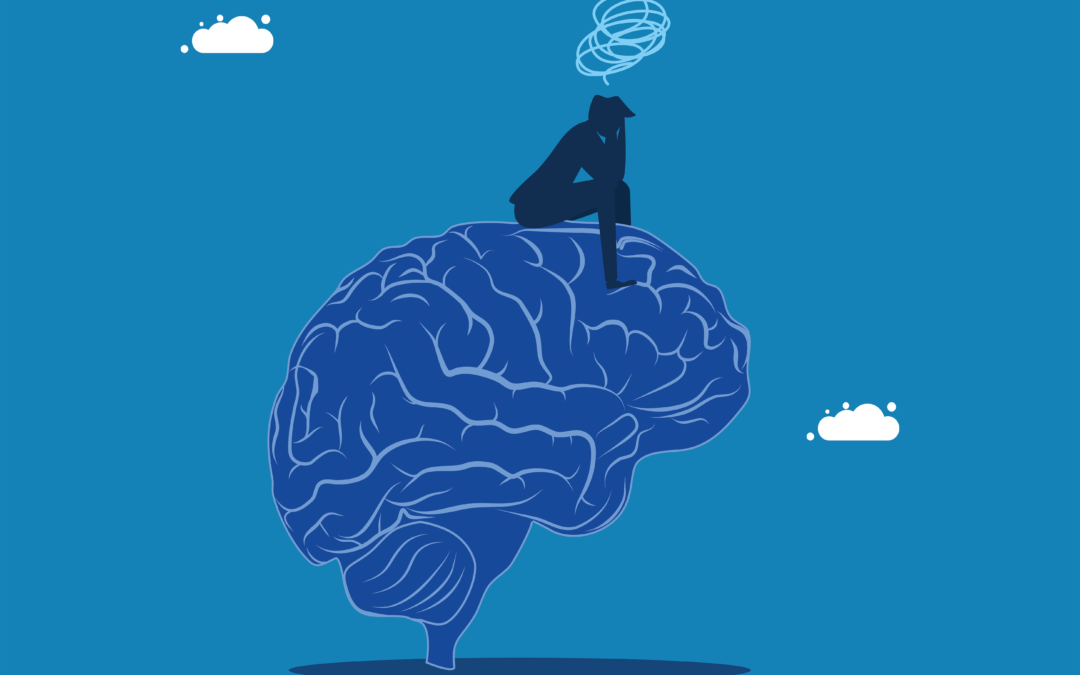Theoretical Foundations
The understanding of anxiety’s impact on working memory is grounded in two major theoretical frameworks. The Processing Efficiency Theory (PET), as proposed by Eysenck and Calvo (1992), establishes that anxiety primarily impedes working memory by disrupting the central executive component. This component, crucial for higher-order cognitive functions, becomes compromised when anxiety interferes with strategy selection, planning, and attentional control processes (Berggren & Derakshan, 2013).
Building upon PET, the Attentional Control Theory (ACT) developed by Eysenck et al. (2007) provides a more detailed explanation of how anxiety affects cognitive performance. According to ACT, anxiety shifts attention towards stimulus-driven processes, thereby reducing the efficiency of goal-directed attention systems (Derakshan & Eysenck, 2009). This theoretical framework explains why anxious individuals often struggle to maintain focus on task-relevant information while becoming increasingly susceptible to distracting stimuli.
Mechanisms of Impact
The impact of anxiety on working memory operates through multiple pathways. Research by Shields et al. (2016) demonstrates that anxiety triggers significant physiological responses, including the activation of the HPA axis and subsequent cortisol release. These physiological changes directly affect cognitive resource allocation, often leading to decreased performance on working memory tasks.
The relationship between processing efficiency and performance effectiveness represents a crucial distinction in understanding anxiety’s impact. According to Eysenck and Derakshan (2011), while anxious individuals may eventually achieve similar performance levels as their non-anxious counterparts, they typically require significantly more cognitive resources and time to do so. This finding highlights the importance of considering both the quality and efficiency of cognitive processing when evaluating anxiety’s effects.
Differential Effects of Anxiety Types
State Anxiety Effects
State anxiety demonstrates distinct patterns of influence on working memory performance. Edwards et al. (2015) found that state anxiety, while potentially disruptive, shows more variable effects on working memory capacity. The impact appears to be particularly pronounced when external threat signals are present, suggesting a context-dependent relationship.
Trait Anxiety Impact
In contrast, trait anxiety demonstrates more consistent negative associations with working memory performance. Research by Moran (2016) indicates that individuals with high trait anxiety show greater susceptibility to working memory impairment, particularly when faced with additional stressors. This finding suggests that trait anxiety may create a more persistent burden on cognitive resources.
Working Memory Training as an Intervention
Recent research has shown promising results regarding the use of working memory training as an intervention for anxiety reduction. Sari et al. (2016) demonstrated that structured working memory training programmes can lead to significant reductions in anxiety symptoms, with effects maintaining over time. The success of these interventions appears to be related to their ability to strengthen cognitive resources and improve attentional control mechanisms.
Evidence of Effectiveness
The effectiveness of working memory training has been supported by meta-analytic evidence. Studies have shown small but significant reductions in post-training anxiety levels, with sustained effects observed in follow-up assessments (Moran, 2016). The training appears to be particularly effective when tailored to individual needs and implemented consistently over time.
Clinical and Educational Applications
The implications of these findings extend significantly into clinical and educational settings. Maloney et al. (2014) emphasise the importance of early assessment and intervention, particularly in educational contexts where anxiety can significantly impact academic performance. The implementation of working memory training programmes in these settings has shown promise in addressing both cognitive and emotional aspects of anxiety.
Clinical applications have demonstrated that working memory training can be particularly beneficial for individuals with sub-clinical anxiety symptoms. Johnson and Gronlund (2009) found that such interventions are most effective when integrated into comprehensive treatment approaches that address both cognitive and emotional aspects of anxiety.
Future Directions and Considerations
The field continues to evolve, with several important areas requiring further investigation. Berggren and Derakshan (2013) suggest that future research should focus on understanding individual differences in response to working memory training and developing more targeted intervention protocols. Additionally, the long-term effectiveness of these interventions and their optimal implementation strategies remain areas of active investigation.
Conclusion
The relationship between anxiety and working memory performance represents a complex interplay of cognitive, emotional, and physiological factors. Understanding this relationship has significant implications for developing effective interventions. The evidence supporting working memory training as an intervention strategy is promising, though continued research is needed to optimise its effectiveness for different populations and contexts.
The success of working memory training in addressing anxiety-related cognitive impairments highlights the importance of integrated approaches to mental health and cognitive performance. As our understanding of these relationships continues to develop, more effective and targeted interventions may emerge, potentially revolutionising how we address anxiety-related cognitive challenges in both clinical and educational settings.
This comprehensive understanding of the anxiety-working memory relationship, combined with evidence-supporting interventions like working memory training, provides a foundation for developing more effective strategies to support individuals affected by anxiety-related cognitive impairments. The continued evolution of this field promises to yield increasingly sophisticated and effective approaches to managing the impact of anxiety on cognitive performance.
References
Ashcraft, M. H., & Kirk, E. P. (2001). The relationships among working memory, math anxiety, and performance. Journal of Experimental Psychology: General, 130(2), 224-237.
Baddeley, A. (2012). Working memory: Theories, models, and controversies. Annual Review of Psychology, 63, 1-29.
Berggren, N., & Derakshan, N. (2013). The role of consciousness in attentional control differences in trait anxiety. Cognition & Emotion, 27(5), 923-931.
Derakshan, N., & Eysenck, M. W. (2009). Anxiety, processing efficiency, and cognitive performance: New developments from attentional control theory. European Psychologist, 14(2), 168-176.
Edwards, M. S., Moore, P., Champion, J. C., & Edwards, E. J. (2015). Effects of trait anxiety and situational stress on attentional shifting are buffered by working memory capacity. Anxiety, Stress, & Coping, 28(1), 1-16.
Eysenck, M. W., & Calvo, M. G. (1992). Anxiety and performance: The processing efficiency theory. Cognition & Emotion, 6(6), 409-434.
Eysenck, M. W., & Derakshan, N. (2011). New perspectives in attentional control theory. Personality and Individual Differences, 50(7), 955-960.
Eysenck, M. W., Derakshan, N., Santos, R., & Calvo, M. G. (2007). Anxiety and cognitive performance: Attentional control theory. Emotion, 7(2), 336-353.
Johnson, D. R., & Gronlund, S. D. (2009). Individuals lower in working memory capacity are particularly vulnerable to anxiety’s disruptive effect on performance. Anxiety, Stress, & Coping, 22(2), 201-213.
Maloney, E. A., Sattizahn, J. R., & Beilock, S. L. (2014). Anxiety and cognition. Wiley Interdisciplinary Reviews: Cognitive Science, 5(4), 403-411.
Moran, T. P. (2016). Anxiety and working memory capacity: A meta-analysis and narrative review. Psychological Bulletin, 142(8), 831-864.
Owens, M., Stevenson, J., Hadwin, J. A., & Norgate, R. (2014). When does anxiety help or hinder cognitive test performance? The role of working memory capacity. British Journal of Psychology, 105(1), 92-101.
Sari, B. A., Koster, E. H., & Derakshan, N. (2016). Training working memory to improve attentional control in anxiety: A proof-of-principle study using behavioral and electrophysiological measures. Biological Psychology, 121(Pt B), 203-212.
Shields, G. S., Sazma, M. A., & Yonelinas, A. P. (2016). The effects of acute stress on core executive functions: A meta-analysis and comparison with cortisol. Neuroscience & Biobehavioral Reviews, 68, 651-668.
Swanson, H. L. (2020). Working memory and strategy instruction in children with learning disabilities. Journal of Learning Disabilities, 53(2), 109-123.

As a PhD Researcher in Computational Cognitive Neuroscience and Psychology at Birkbeck, University of London, I specialise in the complex interplay between mental health and cognitive function. My practice is built on a robust academic foundation in psychology and neuroscience, complemented by counselling and psychotherapy qualifications (CPCAB, accredited by the BACP and NCPS).
My research focuses on developing innovative, gamified, and personalised working memory training, leveraging advanced computational methods, machine learning, and psychological assessment. This work directly informs my integrative, evidence-based approach to therapy and neurocognitive rehabilitation. I help clients understand that conditions like mood disorders, anxiety, and trauma can impact cognitive ability, while cognitive impairments often contribute to emotional distress. By addressing these elements together, we work to improve overall quality of life.
I am committed to making evidence-based strategies accessible for individuals facing cognitive challenges—from neurodevelopmental conditions to brain injuries and aging. Through my blog, I share insights from my work to connect cutting-edge research with real-world impact.
Accreditation & Memberships:
I am accredited by the British Psychological Society (BPS) and hold memberships with the British Neuroscience Association (BNA), the Experimental Psychology Society (EPS), the British Association for Cognitive Neuroscience (BACN), the American Psychological Association (APA), and the Canadian Psychological Association (CPA). I am also a member of the Expert Witness Institute (EWI), developing a specialised pathway in providing psychological evidence for legal proceedings.
By continually expanding my knowledge across these disciplines, I ensure my practice and research remain accurate, ethical, and relevant, and I am dedicated to translating scientific progress into practical benefits for the communities I serve.
Dorota Styk



